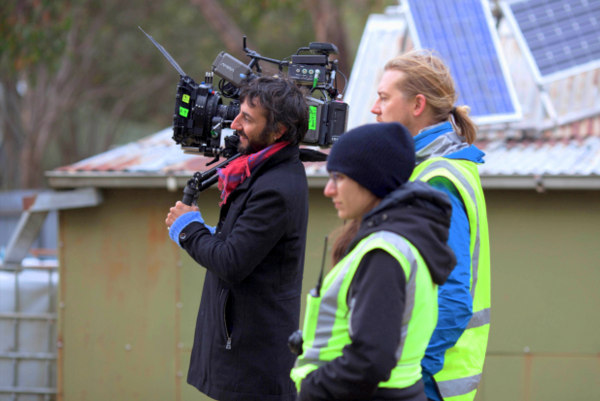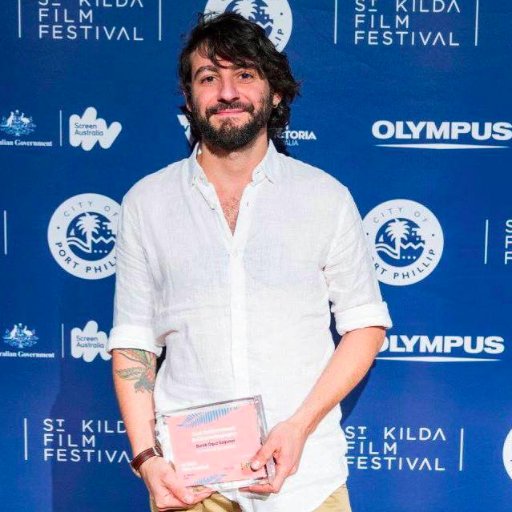The Spread chats with an up-and-coming name in the world of cinematography, Burak Oguz Saguner, about his career thus far.

Burak Oguz Saguner is an accomplished, and award-winning, cinematographer; having won the Best Achievement in Cinematography award at the 2016 St Kilda Film Festival and the 2016 Canberra Short Film Festival for his film Driftwood Dustmites. We chat with him about his influences, his origins and where he’s heading next.
What drew you to cinematography?
My parents were very busy when I was a young kid. Dad worked in Istanbul and mum studied Opera in Ankara, so I was looked after by my grandparents a lot of the time.
Grandpa and grandma were both artists. They painted every day in their home studio and I spent most of my hours watching them. That drew me to imagery, colour and composition.
When it was time to start primary school, mum and I moved back to Istanbul and joined my father. Istanbul is a crazy city of extremes. With a population larger than quite a lot of European countries, all opposites live side by side in a very confined space. There is a story wherever you turn your head. The texture and layers of the city are quite unique. Eventually, it inspired me to take up photography. Being able to express myself without speaking from time to time became very entertaining also.
Starting film school, I had no idea that cinematography would become my craft. I just wanted to tell stories and become a filmmaker. Nonetheless, I started shooting for my classmates and they seemed to enjoy what I was doing. After graduating I got hired as a cinematographer for a small budget film. I said yes, and that was that. I’ve never wanted to stop shooting films since then.
How do you balance your eye for the film with the director’s vision?
By putting my ears to good use and filtering what I hear through my heart. Like any other collaboration, listening is a very important part of  filmmaking. A clear communication and a fluid conversation are crucial. Once I truly understand and feel the vision and intention behind a project then I can offer my interpretation.
filmmaking. A clear communication and a fluid conversation are crucial. Once I truly understand and feel the vision and intention behind a project then I can offer my interpretation.
What’s the most important lesson you’ve learned in your career, thus far?
A series of well composed, pretty, images does not necessarily make good cinematography. The goal is not to produce eye candy. You always have to think about the entire film and the story. It definitely taught me how to be more present and how to see rather than just look.
Where do you stand on the ongoing “film vs digital” argument?
I am not sure if there is much of an argument to be had. Realistically, you can only compare things that come from the same or similar source. You won’t compare an animal to a fruit. For me, film and digital are like that too. They come from completely different worlds. They have different DNAs. One is analog, it is made of material. The other is coding, it is made of numbers. They are suitable for different expectations and, useful in different situations. The sad thing here is the “let’s put film into the grave” attitude. You would not kill Caravaggio or Van Gogh because you have a stills camera and Photoshop. You would not try stopping people playing instruments because you can compose songs on a MIDI board and a computer. It is an unhealthy mindset.
It also, shouldn’t be overlooked that digital is equally hard to master as a medium, if not harder. Just because you can see an image on a screen as soon as you plug a cable and push a button does not mean that you achieve a taste that quickly. Actually, in many cases, film is much more forgiving and generous. Since it is material, it has its own texture and it is way more agile. It can make its own magic. Digital’s accessibility and immediacy do not change this fact, at least not yet.
You’ve worked predominantly in Australia and Australian film does have a distinct look, what makes up that look for you?
 I’d say every country I’ve worked in, or been to, is unique in this way. The light is always different, so is the landscape, climate, architecture and culture. All these elements make the image and cinema of the place distinct.
I’d say every country I’ve worked in, or been to, is unique in this way. The light is always different, so is the landscape, climate, architecture and culture. All these elements make the image and cinema of the place distinct.
Perhaps, Australia is distinct, also, because it is a continent-country and spatially quite far removed from rest of the world so it does not really share its visual properties with other bordering nations. Also, its population is almost entirely made of immigrants from everywhere in the world which shapes the social fabric of the country and the way people see things or what they like in a unique way.
Who would you say are your main stylistic influences?
I’d say my stylistic influences are more a matter of what than who. I get my inspirations more from feeling than form. For example, the way I feel when a piece of music plays or when I hear a sound. Mother nature is a big influence. The way objects and subjects look in a certain light… Wind, rain, fire.
Beyond all this, I love the works of Christopher Doyle, Lance Acord, Robby Muller and enjoy looking at Ara Guler, Fred Herzog and Mary Ellen Mark photographs.
What’s next for you?
I will be working on a feature film called Thirty-Three which will be directed by Michael Booth. It was originally a theatre play by Michael  Booth and Alistair Powning which was very well received on stage and now we are adapting it for the screen.
Booth and Alistair Powning which was very well received on stage and now we are adapting it for the screen.
The story is about a primary-school teacher, Saskia. She has moved into a terraced house in Newtown after the recent death of her father. On the night of her 33rd birthday, she invites her closest friends over to celebrate. But then her younger brother, Josh, turns up unexpectedly, a low-key dinner party turns into a series of revelations including unspoken truths from the past.
What’s the best work you’ve seen in the past year? Other than your own, obviously.
Victoria (although it is from 2015, I only got to see it last year), Certain Women, American Honey.
You can find out more about Burak on his website: burakoguzsaguner.com


